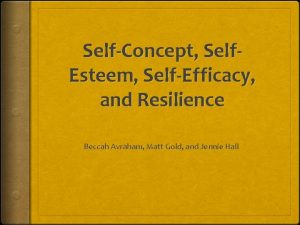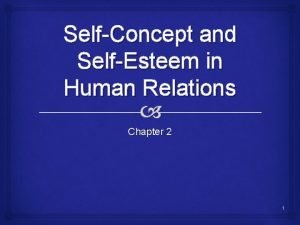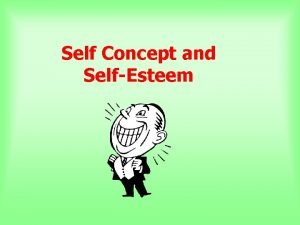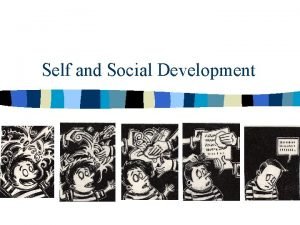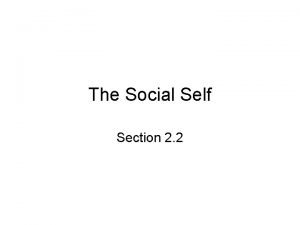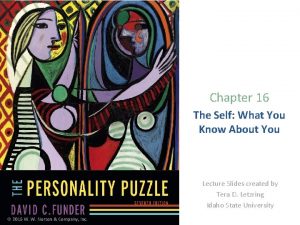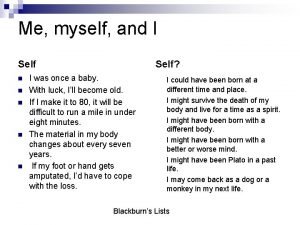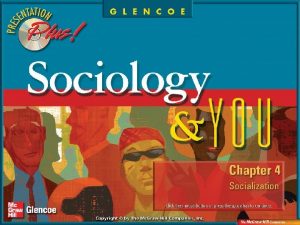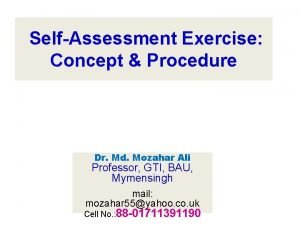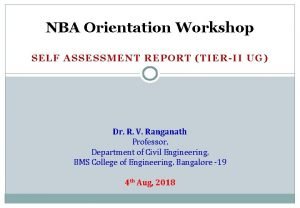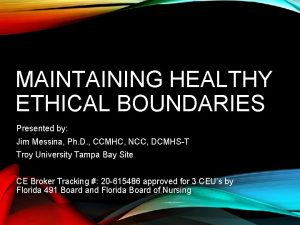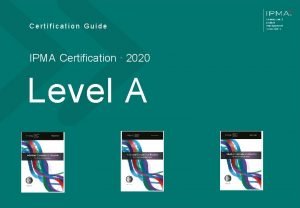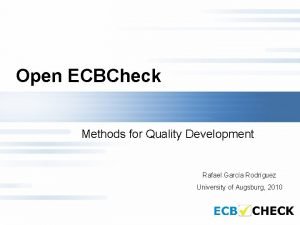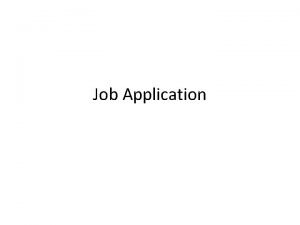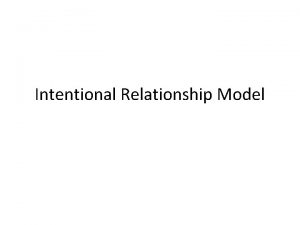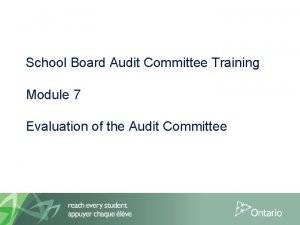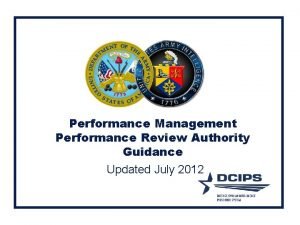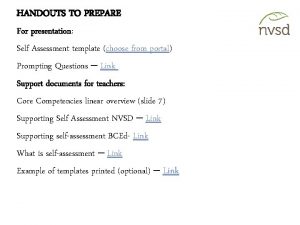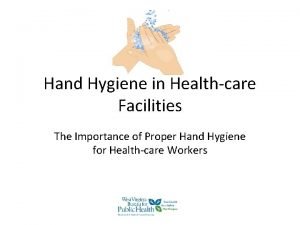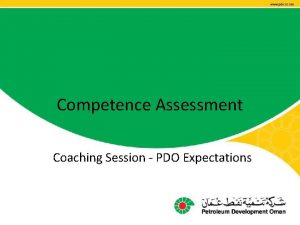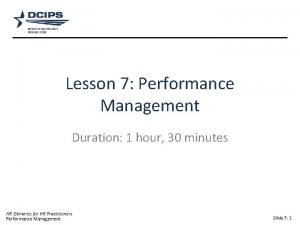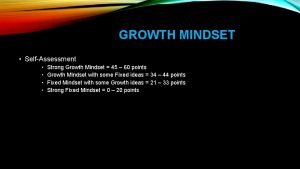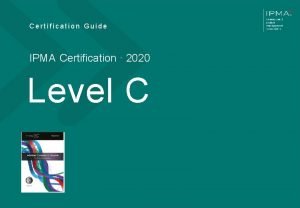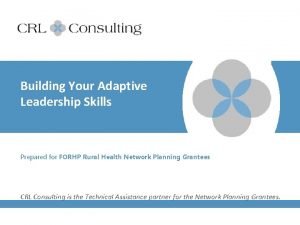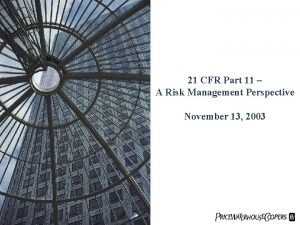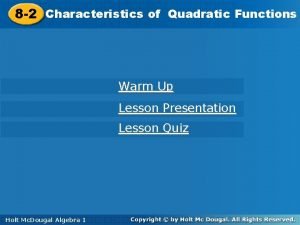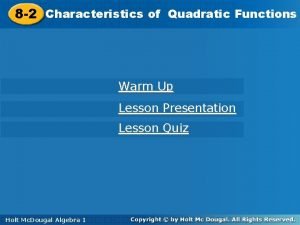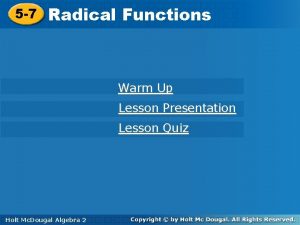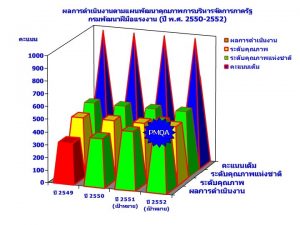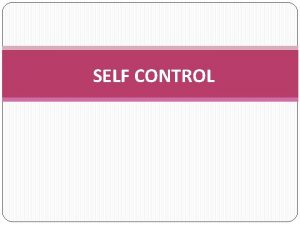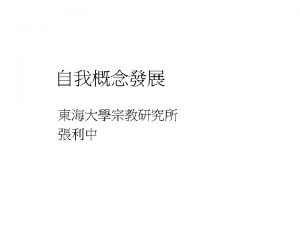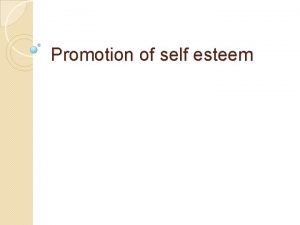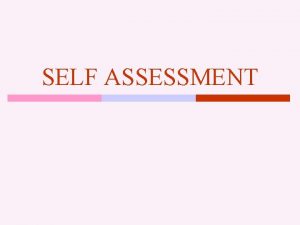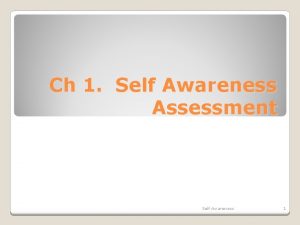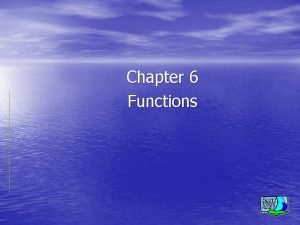Self Assessment Chapter 6 part 1 Functions of

































































- Slides: 65

Self Assessment Chapter 6, part 1

Functions of the Skeletal System Figure 6. 1 Functions of the skeletal©system. 2016 Pearson Education, Inc.

Bone Structure Figure 6. 2 Classification of bones by shape. © 2016 Pearson Education, Inc.

Bone Structure • Structure of a long bone: • ______ – membrane composed of dense irregular collagenous connective tissue; forms a covering, rich with blood vessels and nerves; surrounds outer surface of long bones • ______– made of collagen; anchors periosteum firmly to underlying bone surface by penetrating deep into bone matrix Figure 6. 3 Structure of long bones. © 2016 Pearson Education, Inc.

Bone Structure • Structure of a long bone: • Periosteum – membrane composed of dense irregular collagenous connective tissue; forms a covering, rich with blood vessels and nerves; surrounds outer surface of long bones • Perforating fibers (Sharpey’s fibers) – made of collagen; anchors periosteum firmly to underlying bone surface by penetrating deep into bone matrix Figure 6. 3 Structure of long bones. © 2016 Pearson Education, Inc.

Bone Structure • Structure of a long bone: • Periosteum – membrane composed of dense irregular collagenous connective tissue; forms a covering, rich with blood vessels and nerves; surrounds outer surface of long bones • Perforating fibers (Sharpey’s fibers) – made of collagen; anchors periosteum firmly to underlying bone surface by penetrating deep into bone matrix Figure 6. 3 Structure of long bones. © 2016 Pearson Education, Inc.

Bone Structure • Structure of a long bone (continued): • _____ – shaft of a long bone; each end is its ______; _____ is covered with a thin layer of hyaline cartilage (articular cartilage) found within joints (articulations) between bones • Within diaphysis is a hollow cavity known as ____; contains either red or yellow bone marrow, depending on bone and age of individual Figure 6. 3 Structure of long bones. © 2016 Pearson Education, Inc.

Bone Structure • Structure of a long bone (continued): • Diaphysis – shaft of a long bone; each end is its epiphyses; epiphysis is covered with a thin layer of hyaline cartilage (articular cartilage) found within joints (articulations) between bones • Within diaphysis is a hollow cavity known as marrow cavity; contains either red or yellow bone marrow, depending on bone and age of individual Figure 6. 3 Structure of long bones. © 2016 Pearson Education, Inc.

Bone Structure • Structure of a long bone (continued): • ______– one of two bone textures; hard, dense outer region that allows bone to resist linear compression and twisting forces among other stresses • _____(cancellous bone) – second bone texture found inside cortical bone; honeycomb-like framework of bony struts; allows long bones to resist forces from many directions; provides a cavity for bone marrow Figure 6. 9 Structure of compact bone. © 2016 Pearson Education, Inc.

Bone Structure • Structure of a long bone (continued): • Compact bone – one of two bone textures; hard, dense outer region that allows bone to resist linear compression and twisting forces among other stresses • Spongy bone (cancellous bone) – second bone texture found inside cortical bone; honeycomb-like framework of bony struts; allows long bones to resist forces from many directions; provides a cavity for bone marrow Figure 6. 9 Structure of compact bone. © 2016 Pearson Education, Inc.

Bone Structure • Structure of a long bone (continued): • Bony struts of spongy bone and all inner surfaces of bone are covered by a thin membrane called _______; contains different populations of bone cells involved in maintenance of bone homeostasis • _____– found separating both proximal and distal epiphyses from diaphysis; remnants of ______(growth plates), a line of hyaline cartilage found in developing bones of children © 2016 Pearson Education, Inc.

Bone Structure • Structure of a long bone (continued): • Bony struts of spongy bone and all inner surfaces of bone are covered by a thin membrane called endosteum; contains different populations of bone cells involved in maintenance of bone homeostasis • Epiphyseal lines – found separating both proximal and distal epiphyses from diaphysis; remnants of epiphyseal plates (growth plates), a line of hyaline cartilage found in developing bones of children © 2016 Pearson Education, Inc.

Bone Structure • Blood and nerve supply to bone – bones are well supplied with blood vessels and sensory nerve fibers: • Blood supply to short, flat, irregular, and sesamoid bones is provided mostly by vessels in periosteum that penetrate bone • Long bones get a third of their blood supply from periosteum; mostly supplies compact bone © 2016 Pearson Education, Inc.

Bone Structure • Blood and nerve supply to bone (continued): • Remaining two-thirds is supplied by one or two nutrient arteries; enter bone through a small hole in diaphysis called ______ • Nutrient arteries bypass compact bone to supply internal structures of bone • Epiphyses receive some blood supply from nutrient arteries; majority comes from small blood vessels that enter and exit through small holes in their compact bone © 2016 Pearson Education, Inc.

Bone Structure • Red bone marrow – consists of loose connective tissue that supports islands of blood-forming hematopoietic cells • Amount of red marrow ______as a person ages • In Infants and young children, most bone marrow is red because their rapid rate of growth requires a constant supply of new blood cells. Figure 6. 3 b Structure of long bones. © 2016 Pearson Education, Inc.

Bone Structure • Red bone marrow – consists of loose connective tissue that supports islands of blood-forming hematopoietic cells • Amount of red marrow decreases as a person ages • Red marrow in adult is found only in pelvis, proximal femur and humerus, vertebrae, ribs, sternum, clavicles, scapulae, and some bones of skull • In Infants and young children, most bone marrow is red because their rapid rate of growth requires a constant supply of new blood cells. Figure 6. 3 b Structure of long bones. © 2016 Pearson Education, Inc.

Bone Structure • ________– Stores triglycerides, consists mostly of blood vessels and adipocytes. Figure 6. 3 b Structure of long bones. © 2016 Pearson Education, Inc.

Bone Structure • Yellow bone marrow – Stores triglycerides, consists mostly of blood vessels and adipocytes. Figure 6. 3 b Structure of long bones. © 2016 Pearson Education, Inc.

Microscopic Structure • Bone or osseous tissue – primary tissue found in bone; composed mostly of _________with a small population of ____ scattered throughout • Extracellular matrix of bone is unique: • ________– consisting of minerals makes up about 65% of bones total weight • _________– makes up remaining 35%; consists of collagen fibers and usual ECM components (Figure 6. 5) © 2016 Pearson Education, Inc.

Microscopic Structure • Bone or osseous tissue – primary tissue found in bone; composed mostly of extracellular matrix with a small population of cells scattered throughout • Extracellular matrix of bone is unique: • Inorganic matrix – consisting of minerals makes up about 65% of bones total weight • Organic matrix – makes up remaining 35%; consists of collagen fibers and usual ECM components (Figure 6. 5) © 2016 Pearson Education, Inc.

Extracellular Matrix • Inorganic matrix – made up predominantly of calcium salts; bone stores around 85% of ______in body as well as a large amount of _______: • Calcium and phosphorus salts exist as large molecules of a mineral called _________[Ca 10(PO 4)6(OH)2] • Crystalline structure makes bone of hardest substances in body; makes it strong and resistant to compression • Allows bone to be both protective and supportive; demonstrates Structure-Function Core Principle • Bicarbonate, potassium, magnesium, and sodium are also found in inorganic matrix © 2016 Pearson Education, Inc.

Extracellular Matrix • Inorganic matrix – made up predominantly of calcium salts; bone stores around 85% of total calcium ions in body as well as a large amount of phosphorus: • Calcium and phosphorus salts exist as large molecules of a mineral called hydroxyapatite crystals [Ca 10(PO 4)6(OH)2] • Crystalline structure makes bone of hardest substances in body; makes it strong and resistant to compression • Allows bone to be both protective and supportive; demonstrates Structure-Function Core Principle • Bicarbonate, potassium, magnesium, and sodium are also found in inorganic matrix © 2016 Pearson Education, Inc.

Extracellular Matrix • Organic matrix – known as _______; consists of protein fibers, proteoglycans, glycosaminoglycans, glycoproteins, and bone-specific proteins • _______– predominant protein fiber; forms cross-links with one another; helps bone resist torsion (twisting) and tensile (pulling or stretching) forces • Collagen fibers also align themselves with hydroxyapatite crystals; enhances hardness of bone © 2016 Pearson Education, Inc.

Extracellular Matrix • Organic matrix – known as osteoid; consists of protein fibers, proteoglycans, glycosaminoglycans, glycoproteins, and bone-specific proteins • Collagen – predominant protein fiber; forms cross-links with one another; helps bone resist torsion (twisting) and tensile (pulling or stretching) forces • Collagen fibers also align themselves with hydroxyapatite crystals; enhances hardness of bone © 2016 Pearson Education, Inc.

Bone Cells • Bone is a dynamic tissue; continually changing as older bone is broken down for raw materials to build new bone; three types of bone cells are responsible for bone’s dynamic nature (Figures 6. 6, 6. 7, 6. 8): • 1. • 2. • 3. Figure 6. 6 Types of bone cells. © 2016 Pearson Education, Inc.

Bone Cells • Bone is a dynamic tissue; continually changing as older bone is broken down for raw materials to build new bone; three types of bone cells are responsible for bone’s dynamic nature (Figures 6. 6, 6. 7, 6. 8): • Osteoblasts • Osteocytes • Osteoclasts Figure 6. 6 Types of bone cells. © 2016 Pearson Education, Inc.

Histology of Bone • Structure of compact bone is continuously subjected to a great deal of stress; tends to strain or deform objects like bone; must be able to withstand these forces or suffer damage: • Compact bone, in cross section, resembles forest of tightly packed trees where each tree is a unit called an _____ or a _______ system • Rings of each tree are made up of thin layers of bone called _____ Figure 6. 9 Structure of compact bone. © 2016 Pearson Education, Inc.

Histology of Bone • Structure of compact bone is continuously subjected to a great deal of stress; tends to strain or deform objects like bone; must be able to withstand these forces or suffer damage: • Compact bone, in cross section, resembles forest of tightly packed trees where each tree is a unit called an osteon or a Haversian system • Rings of each tree are made up of thin layers of bone called lamellae Figure 6. 9 Structure of compact bone. © 2016 Pearson Education, Inc.

Ossification • Ossification or osteogenesis (continued): • Bones formed by ___________are built on a model (starting material) made of a membrane of embryonic connective tissue • Bones formed by ___________are built on a model of hyaline cartilage © 2016 Pearson Education, Inc.

Ossification • Ossification or osteogenesis (continued): • Bones formed by intramembranous ossification are built on a model (starting material) made of a membrane of embryonic connective tissue • Bones formed by endochondral ossification are built on a model of hyaline cartilage © 2016 Pearson Education, Inc.

• ___________– forms many flat bones, including bones of skull and clavicles, during fetal development (Figure 6. 11): • Primary bone – formed within a mesenchymal membrane composed of embryonic connective tissue; richly supplied with blood and populated with mesenchymal cells • Recall that flat bone structure essentially is two outer layers of compact bone with an inner or middle layer of spongy bone • Middle layer of spongy bone ossifies before outer compact bone layers; begins from region called __________ © 2016 Pearson Education, Inc.

Intramembranous Ossification • Intramembranous ossification – forms many flat bones, including bones of skull and clavicles, during fetal development (Figure 6. 11): • Primary bone – formed within a mesenchymal membrane composed of embryonic connective tissue; richly supplied with blood and populated with mesenchymal cells • Recall that flat bone structure essentially is two outer layers of compact bone with an inner or middle layer of spongy bone • Middle layer of spongy bone ossifies before outer compact bone layers; begins from region called primary ossification center © 2016 Pearson Education, Inc.

• ________ • Bone development for all bones below head except clavicles • Begins in fetal stage of development for most bones; some bones (wrist and ankle) ossify much later • Many bones complete ossification by age 7 © 2016 Pearson Education, Inc.

Endochondral Ossification • Endochondral ossification (Figure 6. 12): • Bone development for all bones below head except clavicles • Begins in fetal stage of development for most bones; some bones (wrist and ankle) ossify much later • Many bones complete ossification by age 7 © 2016 Pearson Education, Inc.

• _________occurs from within a model of hyaline cartilage; serves as a scaffold for developing bone: • Hyaline cartilage model is composed of chondrocytes, collagen, and ECM all surrounded by a connective tissue membrane called perichondrium and immature cartilage cells called chondroblasts • Begins at a primary ossification center where primary bone is first synthesized; then replaced with secondary bone • Long bones have secondary ossification centers found in their epiphyses; ossify by a similar pattern © 2016 Pearson Education, Inc.

Endochondral Ossification • Endochondral ossification occurs from within a model of hyaline cartilage; serves as a scaffold for developing bone: • Hyaline cartilage model is composed of chondrocytes, collagen, and ECM all surrounded by a connective tissue membrane called perichondrium and immature cartilage cells called chondroblasts • Begins at a primary ossification center where primary bone is first synthesized; then replaced with secondary bone • Long bones have secondary ossification centers found in their epiphyses; ossify by a similar pattern © 2016 Pearson Education, Inc.

Growth in Length • Long bones lengthen by a process called _________; involves division of chondrocytes (not osteocytes or osteoblasts) in epiphyseal plate • Bone growth takes place at ____ on side closest to ____ Figure 6. 14 Growth at the epiphyseal plate. © 2016 Pearson Education, Inc.

Growth in Length • Long bones lengthen by a process called longitudinal growth; involves division of chondrocytes (not osteocytes or osteoblasts) in epiphyseal plate • Bone growth takes place at epiphysis on side closest to diaphysis (Figure 6. 13) Figure 6. 14 Growth at the epiphyseal plate. © 2016 Pearson Education, Inc.

Growth in Length • Epiphyseal plate, composed of hyaline cartilage that did not ossify zones of cells, each with a distinctive appearance: • Zone of reserve cartilage – (found closest to epiphysis) contains cells that are not directly involved in bone growth but can be recruited for cell division if need arises • Zone of proliferation (next region) consists of actively dividing chondrocytes by endochondral ossification, contains five different lacunae © 2016 Pearson Education, Inc.

Growth in Length • Epiphyseal plate zones (continued): • Zone of hypertrophy and maturation (next region closer to diaphysis) contains mature chondrocytes • Zone of calcification (second to last region) contains dead chondrocytes, some of which have been calcified • Zone of ossification (last region) consists of calcified chondrocytes and osteoblasts © 2016 Pearson Education, Inc.

Growth in Width • Bones not only grow in length, they also grow in width; process called _______ • Osteoblasts, found in between periosteum and bone surface, lay down new bone • Appositional growth does not result in immediate formation of osteons; instead, new _______are formed © 2016 Pearson Education, Inc.

Growth in Width • Bones not only grow in length, they also grow in width; process called appositional growth • Osteoblasts, found in between periosteum and bone surface, lay down new bone • Appositional growth does not result in immediate formation of osteons; instead, new circumferential lamellae are formed © 2016 Pearson Education, Inc.

Role of Hormones in Bone Growth • _______– secreted by anterior pituitary gland; enhances protein synthesis and cell division in nearly all tissues, including bone • Has following effects on both longitudinal and appositional growth: • It increases rate of cell division of chondrocytes in epiphyseal plate • It increases activity of the osteogenic cells, including their activity in zone of ossification • It directly stimulates osteoblasts in periosteum; triggers appositional growth © 2016 Pearson Education, Inc.

Role of Hormones in Bone Growth • Growth hormone – secreted by anterior pituitary gland; enhances protein synthesis and cell division in nearly all tissues, including bone • Has following effects on both longitudinal and appositional growth: • It increases rate of cell division of chondrocytes in epiphyseal plate • It increases activity of the osteogenic cells, including their activity in zone of ossification • It directly stimulates osteoblasts in periosteum; triggers appositional growth © 2016 Pearson Education, Inc.

Role of Hormones in Bone Growth • Male sex hormone ______ has a pronounced effect on bone growth: • Increases appositional growth causing bones in males to become thicker with more calcium salt deposition than in females • Increases rate of mitosis in epiphyseal plate; leads to “growth spurts” in teenage years • Accelerates closure of epiphyseal plate © 2016 Pearson Education, Inc.

Role of Hormones in Bone Growth • Male sex hormone testosterone has a pronounced effect on bone growth: • Increases appositional growth causing bones in males to become thicker with more calcium salt deposition than in females • Increases rate of mitosis in epiphyseal plate; leads to “growth spurts” in teenage years • Accelerates closure of epiphyseal plate © 2016 Pearson Education, Inc.

Role of Hormones in Bone Growth • Female sex hormone ______ also plays a role in bone growth: • Increases rate of longitudinal bone growth and ______osteoclast activity • When estrogen levels spike in teen years an accompanying “growth spurt” occurs in females • Accelerates closure of epiphyseal plate at a much faster rate than testosterone; leads to average height differences between genders © 2016 Pearson Education, Inc.

Role of Hormones in Bone Growth • Female sex hormone estrogen also plays a role in bone growth: • Increases rate of longitudinal bone growth and inhibits osteoclast activity • When estrogen levels spike in teen years an accompanying “growth spurt” occurs in females • Accelerates closure of epiphyseal plate at a much faster rate than testosterone; leads to average height differences between genders © 2016 Pearson Education, Inc.

Bone Remodeling • Once bone has finished growing in length it is far from inactive; undergoes a continuous process of formation and loss called ________; new bone is formed by _____and old bone is removed by ________; cycle occurs for following reasons: • • • Maintenance of calcium ion homeostasis Replacement of primary bone with secondary bone Bone repair Replacement of old brittle bone with newer bone Adaptation to tension and stress © 2016 Pearson Education, Inc.

Bone Remodeling • Once bone has finished growing in length it is far from inactive; undergoes a continuous process of formation and loss called bone remodeling; new bone is formed by bone deposition and old bone is removed by bone resorption; cycle occurs for following reasons: • • • Maintenance of calcium ion homeostasis Replacement of primary bone with secondary bone Bone repair Replacement of old brittle bone with newer bone Adaptation to tension and stress © 2016 Pearson Education, Inc.

Bone Remodeling • Bone remodeling in response to tension and stress: heavier loads (compression) increase tissue deposited in that bone; tension and pressure also affect remodeling • Compression – squeezing or pressing together; occurs when bones are pressed between body’s weight and ground; stimulates bone deposition • Tension – stretching force; bone deposition occurs in regions of bone exposed to tension • Pressure – continuous downward force; bone resorption is stimulated in regions of bone exposed to continuous pressure © 2016 Pearson Education, Inc.

Bone Remodeling • Other factors influencing bone remodeling: • Hormones – Testosterone promotes bone deposition while estrogen inhibits osteoclast activity • Age – As individual ages growth hormone and sex hormones decline; decreases protein synthesis in bone • Calcium ion intake from diet must be adequate to support bone deposition • Vitamin D intake from diet must be adequate to promote calcium ion absorption from gut and prevents calcium ion loss in urine © 2016 Pearson Education, Inc.

Bone Remodeling • Other factors influencing bone remodeling (continued): • Vitamin C intake from diet must be adequate for synthesis of collagen • Vitamin K intake from diet must be adequate for synthesis of calcium ionbinding glycoproteins secreted by osteoblasts • Protein intake from diet must be adequate for osteoblasts to synthesize collagen fibers found in organic matrix © 2016 Pearson Education, Inc.

Bone Remodeling • Bone remodeling and calcium ion homeostasis (continued): • Negative feedback loop (Figure 6. 15): • Calcium ion levels in blood are closely monitored; both high and low levels of calcium ions can lead to major disruptions in homeostasis and even death • Stimulus and receptor: when calcium ion level drops in blood it is detected by parathyroid cells • Control center and effector: parathyroid cells act as control center and secrete ________ Figure 6. 15 Structure of the epiphyseal plate. © 2016 Pearson Education, Inc.

Bone Remodeling • Bone remodeling and calcium ion homeostasis (continued): • Negative feedback loop (Figure 6. 15): • Calcium ion levels in blood are closely monitored; both high and low levels of calcium ions can lead to major disruptions in homeostasis and even death • Stimulus and receptor: when calcium ion level drops in blood it is detected by parathyroid cells • Control center and effector: parathyroid cells act as control center and secrete parathyroid hormone (PTH) Figure 6. 15 Structure of the epiphyseal plate. © 2016 Pearson Education, Inc.

Bone Remodeling • Bone remodeling and calcium ion homeostasis (continued): • Negative feedback loop (continued): • Effect/response: PTH stimulates effects that increase blood calcium ion levels • Increases osteoclast activity; breaks down the inorganic matrix of bone releasing calcium ions from hydroxyapatite crystals • Increases absorption of calcium from gut • Inhibits calcium loss in urine Figure 6. 15 Structure of the epiphyseal plate. © 2016 Pearson Education, Inc.

Bone Remodeling • Bone remodeling and calcium ion homeostasis (continued): • Negative feedback loop (continued): • Homeostasis and negative feedback: As calcium ion levels return to normal in blood, change is detected by parathyroid cells and they reduce secretion of PTH, closing feedback loop Figure 6. 15 Structure of the epiphyseal plate. © 2016 Pearson Education, Inc.

Bone Remodeling Figure 6. 15 Structure of the epiphyseal plate. © 2016 Pearson Education, Inc.

Bone Remodeling • Bone remodeling and calcium ion homeostasis (continued): • Negative feedback loop (continued): • An increase in blood calcium levels triggers a different negative feedback loop; first response is a drop in PTH secretion by parathyroid gland • ______- is secreted by thyroid gland has basically opposite effects as PTH; leads to bone deposition; pulls calcium ions out of blood to manufacture inorganic bone matrix; calcitonin is most active during bone growth and less so in adulthood • ______ is important for calcium ion homeostasis due to its effects on the absorption of calcium ions from the gut © 2016 Pearson Education, Inc.

Bone Remodeling • Bone remodeling and calcium ion homeostasis (continued): • Negative feedback loop (continued): • An increase in blood calcium levels triggers a different negative feedback loop; first response is a drop in PTH secretion by parathyroid gland • Calcitonin is secreted by thyroid gland has basically opposite effects as PTH; leads to bone deposition; pulls calcium ions out of blood to manufacture inorganic bone matrix; calcitonin is most active during bone growth and less so in adulthood • Vitamin D is important for calcium ion homeostasis due to its effects on the absorption of calcium ions from the gut © 2016 Pearson Education, Inc.

Bone Remodeling • Factors influencing bone remodeling are summarized: Figure 6. 16 Factors that influence © bone remodeling. 2016 Pearson Education, Inc.

Bone Repair • General process of fracture healing involves: • ____- (blood clot) fills in gap between bone fragments; mass of blood cells and proteins form in an injury due to ruptured blood vessels • _______ and ______ infiltrate hematoma and form a soft callus; mixture of hyaline cartilage and collagenous connective tissue Figure 6. 17 The process of fracture©repair. 2016 Pearson Education, Inc.

Bone Repair • General process of fracture healing involves: • Hematoma (blood clot) fills in gap between bone fragments; mass of blood cells and proteins form in an injury due to ruptured blood vessels • Fibroblasts and chondroblasts infiltrate hematoma and form a soft callus; mixture of hyaline cartilage and collagenous connective tissue Figure 6. 17 The process of fracture©repair. 2016 Pearson Education, Inc.

Bone Repair • General process of fracture healing (continued): • _____ build a bone callus (hard callus); collar of primary bone made by osteoblasts residing in periosteum • Bone callus is remodeled and primary bone is replaced with secondary bone Figure 6. 17 The process of fracture©repair. 2016 Pearson Education, Inc.

Bone Repair • General process of fracture healing (continued): • Osteoblasts build a bone callus (hard callus); collar of primary bone made by osteoblasts residing in periosteum • Bone callus is remodeled and primary bone is replaced with secondary bone Figure 6. 17 The process of fracture©repair. 2016 Pearson Education, Inc.
 Example
Example Self image vs self perception
Self image vs self perception Self concept vs self esteem
Self concept vs self esteem Self concept goals
Self concept goals Self concept vs self esteem
Self concept vs self esteem Ideal self vs real self
Ideal self vs real self I self and me self difference
I self and me self difference Contoh ideal self dan real self
Contoh ideal self dan real self Declarative self vs procedural self
Declarative self vs procedural self Self confidence and self awareness eyfs
Self confidence and self awareness eyfs Thomas reid brave officer
Thomas reid brave officer Resocialization and desocialization
Resocialization and desocialization Part part whole addition
Part part whole addition Part to part ratio definition
Part to part ratio definition Part part whole
Part part whole Technical descriptions
Technical descriptions Layout of bar
Layout of bar The part of a shadow surrounding the darkest part
The part of a shadow surrounding the darkest part Part to part variation
Part to part variation Wellbeing framework self assessment tool
Wellbeing framework self assessment tool Teaching styles self-assessment tool
Teaching styles self-assessment tool Ken blanchard situational leadership
Ken blanchard situational leadership Personal ttess goals
Personal ttess goals Self-assessment definition
Self-assessment definition Laboratory safety measures
Laboratory safety measures Aiag mmog
Aiag mmog 20 question self- assessment for healthy boundaries scoring
20 question self- assessment for healthy boundaries scoring Associate cipd letters after name
Associate cipd letters after name Self assessment module 3
Self assessment module 3 Ipma self assessment
Ipma self assessment Pupil self assessment
Pupil self assessment Self-assessment definition
Self-assessment definition Benchlearning definition
Benchlearning definition Importer self assessment
Importer self assessment Ipma
Ipma Usda food defense self assessment checklist
Usda food defense self assessment checklist Acecqa self assessment tool
Acecqa self assessment tool Staircase self-assessment model
Staircase self-assessment model Self assessment in job application process
Self assessment in job application process Intentional relationship model occupational therapy
Intentional relationship model occupational therapy He māpuna te tamaiti self-assessment tool
He māpuna te tamaiti self-assessment tool Interview success formula self assessment
Interview success formula self assessment Hipaa security rule self assessment toolkit
Hipaa security rule self assessment toolkit Audit committee self assessment
Audit committee self assessment Culturally responsive teaching self assessment
Culturally responsive teaching self assessment Dcips performance elements self-assessment examples
Dcips performance elements self-assessment examples Nccpa self assessment cme
Nccpa self assessment cme Student self-assessment template
Student self-assessment template Summary of hand hygiene
Summary of hand hygiene Hse competency assessment
Hse competency assessment Career readiness self assessment
Career readiness self assessment Self assessment veiligheidsladder
Self assessment veiligheidsladder Self and peer
Self and peer Rctq
Rctq Dcips performance elements self-assessment examples
Dcips performance elements self-assessment examples Growth mindset self assessment
Growth mindset self assessment Ford supply chain management
Ford supply chain management Document answers
Document answers Adaptive leadership assessment
Adaptive leadership assessment Apwa accreditation
Apwa accreditation Adaptive coaching model
Adaptive coaching model 21 cfr part 11 risk assessment
21 cfr part 11 risk assessment Characteristics of quadratic functions
Characteristics of quadratic functions Transforming polynomial functions quiz
Transforming polynomial functions quiz 8-2 characteristics of quadratic functions
8-2 characteristics of quadratic functions Transformation of a square root function
Transformation of a square root function

